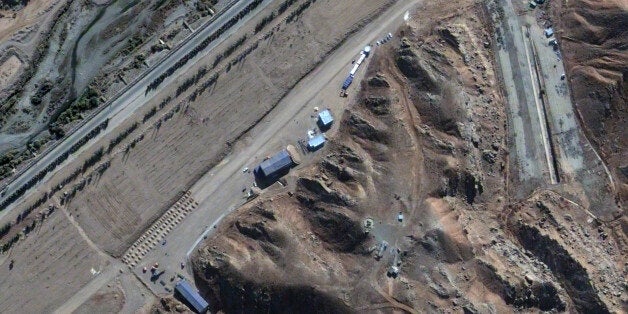

The International Atomic Energy Agency drew several important conclusions in the report it released last week on the weapons-related elements of Iran's past nuclear activities.
First, the IAEA concluded Iran indeed had a nuclear weapons program, and that "a range of activities relevant to the development of a nuclear explosive device were conducted in Iran prior to the end of 2003 as a coordinated effort, and some activities took place after 2003." The world can now drop the word "possible" when talking about the military dimensions of some of Iran's past nuclear activities. The cumulative evidence is persuasive. Iran developed detonators, experimented with explosives technology, engaged in computer modeling of a nuclear explosive, and set up dedicated organizations -- all of which the IAEA found to be weapons-related.
Second, and also important, the report concludes that the weapons program never advanced beyond an exploratory stage. It finds no evidence of weapons-related activity after 2009, and resolves a few weapons-related questions in Iran's favor. The IAEA finds no indications, for example, that there was an undeclared fuel cycle in Iran, or that Iran held significant amounts of undeclared uranium.
Third, the report points out that, unfortunately, Iran has taken steps that make it more difficult for the country to put the past behind it. Indeed, the burden on Iran has been increased by its own actions. The IAEA found that Iran's efforts to demolish, remove and refurbish facilities believed to be related to testing nuclear weapons components "seriously undermined the agency's ability to conduct effective verification."
Fourth, the report indicates that some of the explanations Iran provided in recent months were unconvincing. For example, the IAEA did not buy Iran's story that the particular site the agency visited at Parchin was used for chemical storage, and it cited satellite imagery and sampling as evidence to reject Iran's explanation. Iran alleged that its work on explosive bridge wire detonators was aimed at improving the safety of certain conventional explosives. It also linked their development to its aerospace industry. And later it suggested that its oil and gas industry had a need for EBW detonators. The Agency found these explanations inconsistent or unrelated to the questions it had posed to Iran and concluded that the detonators had "characteristics relevant to a nuclear explosive device." But it acknowledged EBW technology might have civilian or conventional military uses.
Fifth, on several issues, Iran provided no new information, despite the agency's requests. Did Iran undertake illicit procurements in support of its weapons program? Did Iran conduct tests of components of a nuclear explosive device? Did it work on a fusing, arming, and firing system for nuclear-tipped missiles? The IAEA had indications prior to 2011 of Iranian activity in each of these areas. But absent additional information, and in the face of Iranian denials, the IAEA simply reported that it had no new information on which to draw a conclusion, leaving the matters unresolved.
Iranians may say the IAEA came to wrong conclusions on several points. Just because some of what the Iranian government did was "relevant" to work on nuclear weapons doesn't mean that the work actually was aimed at making them. But now that the IAEA has made its assessment, the justification for extra vigilance and continuing concern about Iran's nuclear intentions should be clear to all.
This report does not amount to an acquittal of Iran. The IAEA Board of Governors should receive the report and support implementation of the Joint Comprehensive Plan of Action, as agreed by six world powers and Iran, but should also note that in light of the assessment that Iran did carry out activities relevant to nuclear weapons development, the Agency should continue to pursue answers to the questions that to date it has been unable to resolve.
Earlier on WorldPost:
